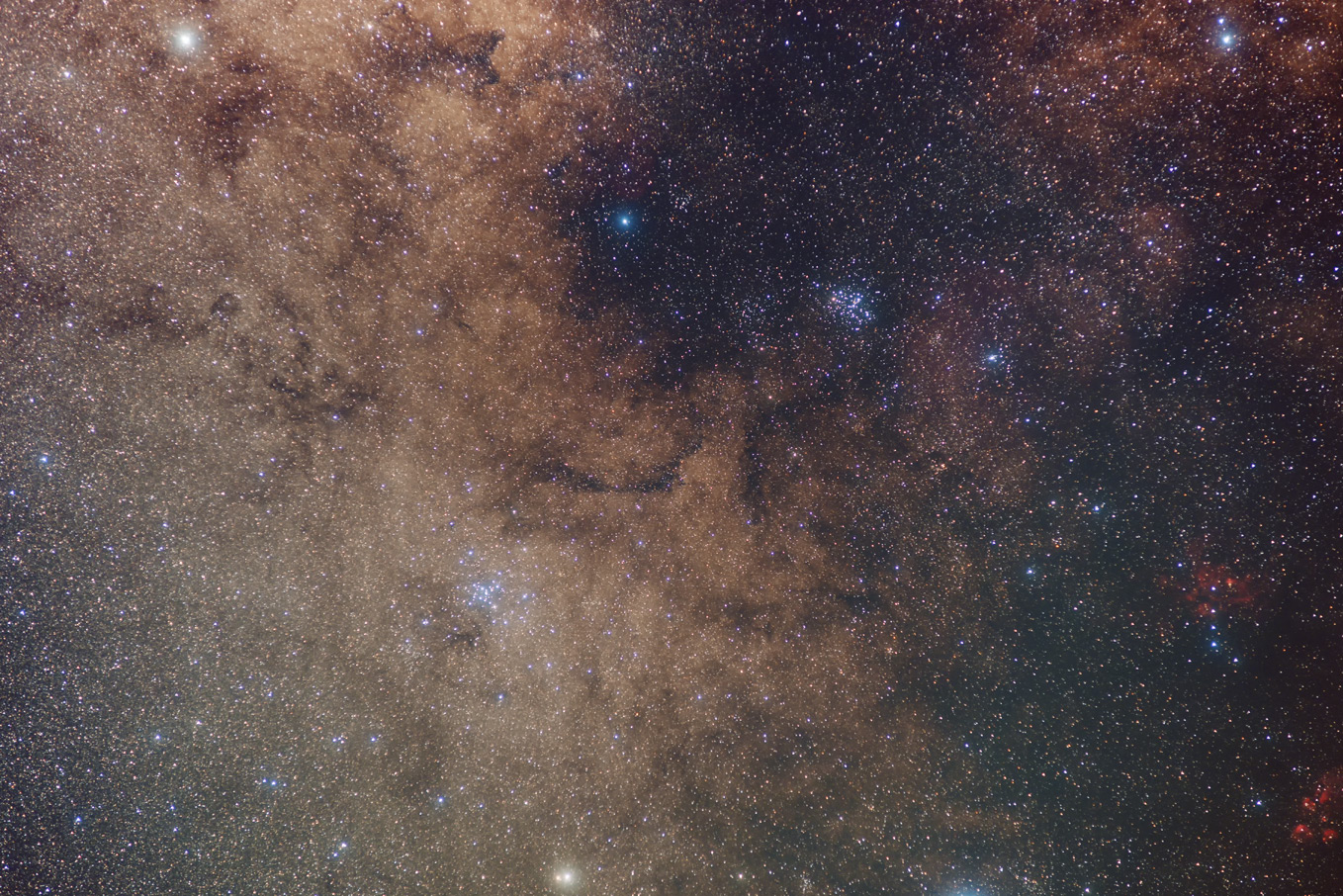| M6 (NGC6405) / Open Cluster, type e, II 3 r |
|---|
| R.A. | 17h 40m 5.9s (2000.0) |
|---|
| Dec. | -32° 13' 00" (2000.0) |
|---|
| Apparent Size | 25' |
|---|
| Real Size | 13 light yrs. |
|---|
| # of Stars | 80 |
|---|
| Magnitude | 5.3 |
|---|
| Distance | 1850 light yrs. |
|---|
|
| M7 (NGC6475) / Open Cluster, type e, I 3 r |
|---|
| R.A. | 17h 53m 54.0s (2000.0) |
|---|
| Dec. | -34° 49' 00" (2000.0) |
|---|
| Apparent Size | 60' |
|---|
| Real Size | 22 light yrs. |
|---|
| # of Stars | 80 |
|---|
| Magnitude | 3.2 |
|---|
| Distance | 1230 light yrs. |
|---|
|
At around the tail of the Scorpion, we can enjoy two open clusters of M6 and M7.
M6 (NGC6405) in upper right hand side is the second-best cluster of the constellation after M7.
Distance of appearance between these clusters is just 3 degrees, so we can appreciate clusters simultaneously with binoculars.
M6 is about 1850 light years away, about 600 light years farther than that of M7.
M7 (NGC6475) in lower left hand side is clearly the best open cluster of the constellation.
This magnificent object is extremely large (about a size of 1 degree) and quite bright, being visible even to the naked eye at a viewpoint far from urban area.
You will be impressed the splendid scenery of about 80 stars scattered in the Milky Way with binoculars.
In fact, in the Messier's catalogue, M7 is positioned at the most southern point in the sphere,
the culminate latitude of that is only about 20 degrees at Tokyo.
And M7 is one of rare objects known before the telescope was invented, the cluster was found out by an ancient astronomer Ptolemy in 2nd century.
This cluster has another name of "Ptolemy's Cluster".
This image has been cropped with an equivalent focal length of 180mm.
|

